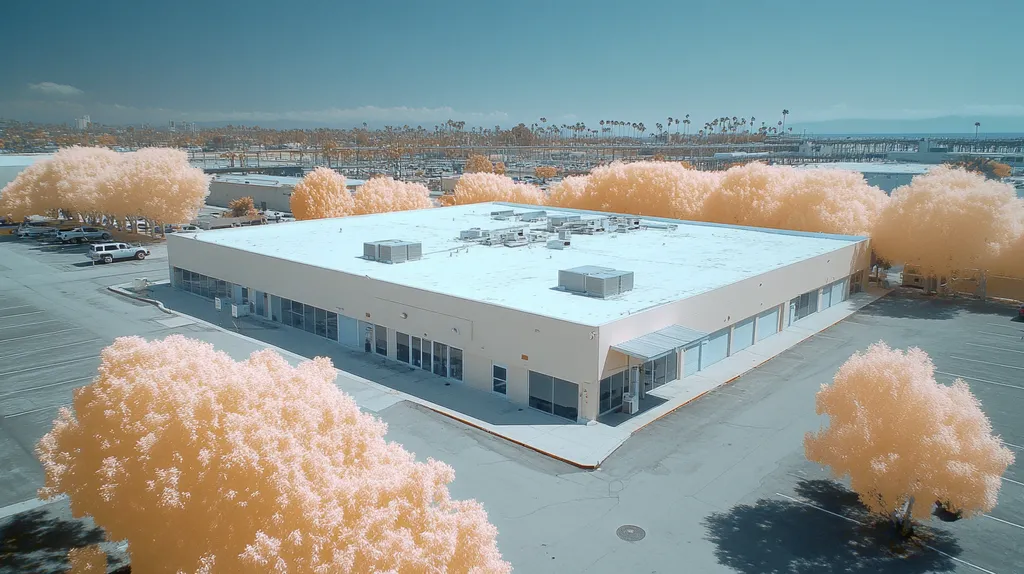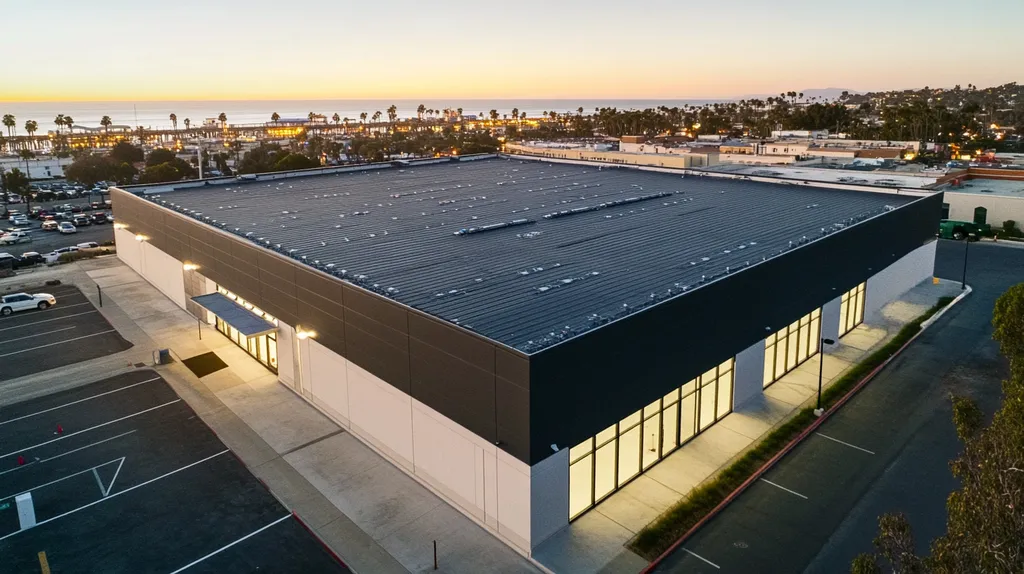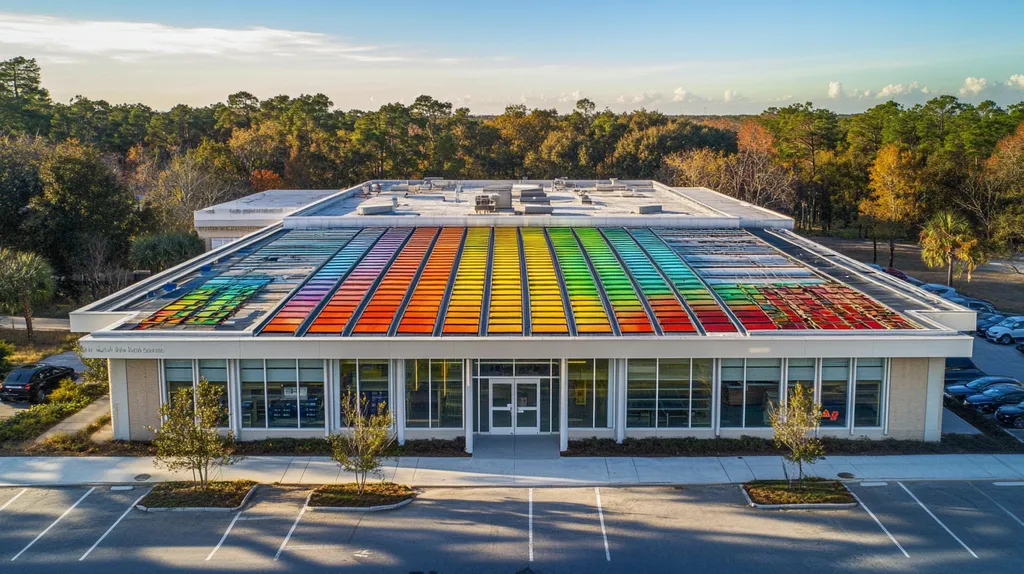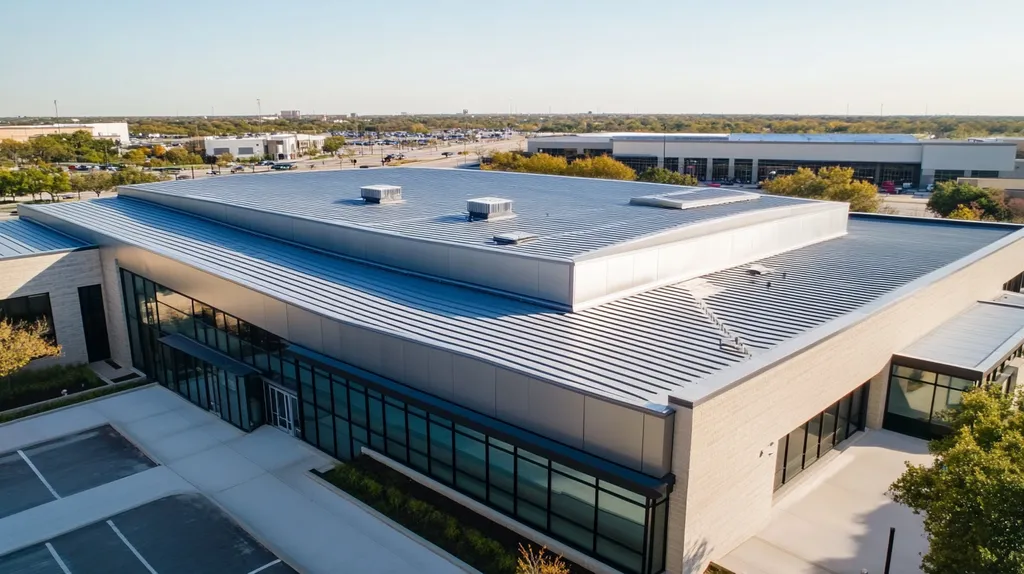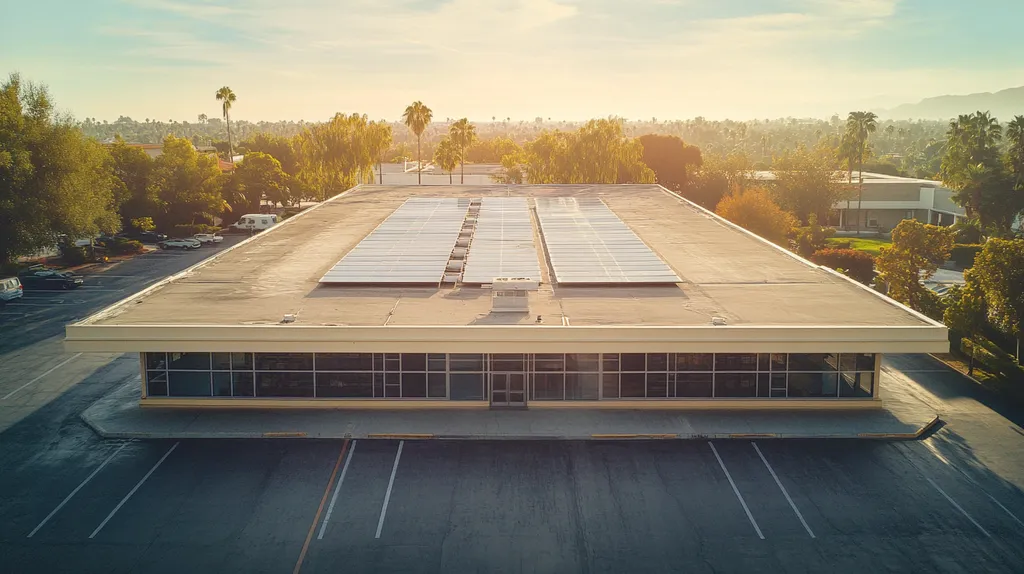Industrial roof coating failures cost facility managers an average of $3.50 per square foot in repairs and remediation – nearly double the initial coating investment. With millions of square feet of industrial roofing requiring protection, warranty compliance has become a mission-critical concern.
Yet studies show that over 60% of coating warranty claims are denied due to improper documentation or installation oversight. Understanding the nuances of coating warranties – from performance requirements to financial implications – can mean the difference between costly repairs and comprehensive coverage.
This practical guide equips facility managers with actionable strategies for navigating warranty compliance, optimizing coating performance, and protecting their roofing investments through systematic inspection and documentation protocols.
SECTION 1: PERFORMANCE FACTORS
The performance of coatings on industrial roofs is critical to their longevity and effectiveness. A recent industry study indicates that poor warranty management can cost facility managers over $50,000 when coatings fail earlier than expected. It’s essential to grasp the nuances of warranty coverage, inspection standards, and contractor qualifications. This section delves into these key performance factors, empowering facility managers to ensure their roofs receive the protection they need to thrive.
Warranty Coverage and System Compatibility
Warranty coverage can differ widely across manufacturers and coating types. Many property owners assume that all warranties are similar, but the true value of a warranty often depends on how well the coating system matches the specific requirements of the roof.
For instance, a single-ply membrane system will need a compatible coating to keep the warranty intact. If there’s a mismatch, coverage could be voided, forcing facilities to bear repair costs. Therefore, it’s crucial to discuss with manufacturers the specific criteria for each warranty-supported application.
Being well-versed in warranty details is equally significant. Certain warranties may have stipulations regarding specific installation practices that need to be followed. Misunderstanding these intricacies could jeopardize future claims and the overall roof performance.
Key Action Items
Manufacturer Inspection Standards
Manufacturers establish rigorous inspection standards to guarantee the proper application of coatings. However, not all facility managers prioritize these standards, which can lead to significant problems later. A coating may appear well-applied initially, but if the application doesn’t adhere to manufacturer guidelines, performance will suffer.
Regular inspections and strict adherence to manufacturer recommendations during application can significantly boost coating performance and durability. Facilities that have undergone thorough manufacturer inspections typically report fewer warranty claims and a more resilient roofing system.
Additionally, fostering accountability among contractors is beneficial. This involves selecting contractors who are familiar with specific manufacturer standards and ensuring compliance throughout the project duration.
Key Action Items
Contractor Skill and Certification
The expertise and certification of contractors are vital for the successful application of roofing coatings. Many facility managers underestimate how crucial this factor is, leading to costly mistakes. A poorly executed coating job can nullify warranties and result in expensive repairs.
For industrial roofs, engaging certified contractors who are experienced in coating applications is essential. Certifications from recognized industry organizations demonstrate a contractor’s commitment to upholding quality standards.
Facility managers should also prioritize ongoing education for their contractors to ensure they stay updated on emerging technologies and application techniques. This creates a culture of professionalism that ultimately enhances warranty compliance and roof performance.
Key Action Items
SECTION 2: FINANCIAL CONSIDERATIONS
For facility managers, understanding the financial stakes of roof coatings is essential. Improper management can lead to substantial costs, including early roof replacements. Interestingly, high-quality roofing coatings can extend the roof’s lifespan by as much as 15 years, highlighting why financial diligence is necessary. This section will address critical financial aspects, such as the costs associated with materials and labor, different warranty types, and strategies for budgeting warranty extensions.
Cost of Materials and Labor Coverage
The choice of roofing materials directly impacts overall costs. While premium coatings may involve a higher initial investment, they usually provide longer-lasting protection, ultimately saving money. Labor costs also vary significantly; for example, a simple flat roof may incur lower labor expenses than a complex roof with intricate features or multiple HVAC units.
To avoid surprises, facility managers should request detailed estimates that break down both material and labor costs. A thorough understanding of these financial aspects contributes to better warranty effectiveness. If a coating fails to adhere properly, substantial financial losses can occur without solid warranty coverage in place.
By reviewing these costs upfront, managers can make more informed decisions that protect their budgets in the long run. Tracking these financial aspects can help mitigate unexpected roofing challenges down the line.
Key Action Items
Amortization and No-Dollar Limit Warranties
Warranties can be categorized into amortization and no-dollar limit options. Amortization warranties may cover some roofing expenses over time, but they can lead to increased out-of-pocket costs as the roof ages, potentially jeopardizing financial stability. This is especially important for long-term planning.
No-dollar limit warranties, on the other hand, offer expansive coverage for a specified duration, allowing facility managers to dodge unexpected expenses. These warranties typically include materials and labor, making them a financially savvy choice.
Facility managers should carefully evaluate which warranty type aligns best with their budget objectives. Selecting the right warranty can greatly ease maintenance budget management, ensuring financial predictability and stability for the facility. Understanding the implications of each warranty type is key to future financial planning.
Key Action Items
Budgeting for Warranty Extensions
As roofs age, it’s vital for facility managers to budget for warranty extensions proactively. Assessing warranty expiration before critical repairs might become necessary is crucial for maintaining operational efficiency. Planning ahead can prevent costly disruptions.
Setting aside funds for warranty renewals safeguards long-term investments. By estimating maintenance costs, managers can ensure a steady cash flow that avoids budget overruns. Regular inspections of the roof’s condition can guide when and how to pursue extensions effectively.
While investing in additional warranty coverage may seem overwhelming initially, it serves as crucial financial protection against unforeseen repairs. Strategically planning for these budget allocations paves the way for long-term success and stability.
Key Action Items
SECTION 3: COMPLIANCE REQUIREMENTS
Ensuring compliance with manufacturer specifications and industry standards is essential for protecting the lifespan and efficacy of coatings on industrial roofs. Ignoring these requirements can lead to major setbacks, including premature roof failures, costly repairs, and the possibility of losing warranty coverage. For instance, using the incorrect primer may present significant obstacles when seeking warranty support. This section highlights pivotal compliance challenges, including manufacturer specifications, certification protocols, and regulatory codes.
Manufacturer Specifications and Standards
Every coating manufacturer provides detailed specifications outlining how to properly apply their products, prepare surfaces, and manage environmental conditions. Adhering to these specifications is not just a good practice; it is crucial for maintaining warranty coverage. Skipping steps or altering processes can lead to coating failures, which can cause leaks and structural damage.
For example, many manufacturers specify particular cleaning methods to ensure proper adhesion. If a facility chooses a less effective method, the coating may not stick well, leading to issues like bubbling or peeling. Sticking to these guidelines not only helps prevent costly repairs but also extends the roof’s lifespan.
Keeping thorough documentation of all application processes—including the materials used and the environmental conditions at the time—will serve as a helpful resource should a warranty claim arise. Regular training for team members involved in roofing projects can reinforce compliance, increasing the chances of a successful application.
Key Action Items
Certification and Approval Processes
Certification and approval processes play a crucial role in ensuring that coating applications meet industry standards. Manufacturers often have specific protocols for certifying contractors who install their coatings, with only certified applicators able to guarantee that installations comply with warranty requirements.
For instance, many manufacturers require installers to undergo tailored training on their products. Hiring unqualified contractors can lead to compliance issues, making warranty claims more challenging if installation problems arise.
Additionally, certified contractors are typically well-versed in the specific requirements of coatings, including temperature constraints and curing durations. Familiarity with these factors is key to ensuring successful roofing projects and preventing warranty voidance.
Key Action Items
Regulatory Compliance and Codes
Apart from manufacturer specifications, facility managers must also navigate a variety of regulatory requirements and building codes. Depending on the jurisdiction, local codes may dictate specific materials, installation methods, and performance criteria that must be met on roofing projects.
Failure to adhere to these regulations can result in penalties, including fines and costly rework. For instance, using non-compliant materials may lead to inspections revealing code violations, impacting both safety and warranty integrity.
Moreover, many insurance policies require compliance with local codes to maintain coverage. Therefore, staying updated on state and local regulatory changes is essential for facility managers. Regular consultations with legal and compliance experts can help facilities stay compliant and foster a culture of safety that lessens future headaches.
Key Action Items
SECTION 4: RISK MANAGEMENT
In the fast-paced world of industrial roofing, the stakes are high. Neglecting to manage risks associated with roof coatings can result in expensive defects, extended downtimes, and potential safety hazards. Industry studies show that nearly 20% of roofing failures stem from installation errors or poor material choices. This section illuminates how to identify potential failures, mitigate associated risks, and effectively prepare for emergencies, enabling facility managers to protect their investments and maintain seamless operations.
Identifying Potential Defects and Failures
Proactively identifying potential defects is vital for preserving the integrity of a roof. Facility managers should conduct regular inspections to spot common issues such as blistering, cracking, and peeling of the coating. A systematic approach that includes both visual checks and moisture surveys helps in recognizing early warning signs.
Understanding specific types of failures tied to roof coatings is also key. For example, inadequate surface preparation can lead to poor adhesion and subsequent premature failure. Utilizing checklists during inspections standardizes the process, ensuring that no potential defect goes overlooked.
Incorporating advanced technologies like infrared scanning can greatly enhance detection methods. These tools reveal hidden water damage that might threaten a coating’s effectiveness. By combining routine inspections with innovative technology, facility managers can significantly decrease the risk of coating failures.
Key Action Items
Mitigating Installation and Material Risks
Installation and material risks can greatly influence the longevity of roof coatings. To mitigate these risks, property owners should prioritize hiring reputable contractors with a solid track record. Researching reviews and certifications ensures that chosen professionals adhere to industry best practices.
Additionally, comprehending material specifications is crucial, as not all coatings are suited to every environment. For example, extreme temperature fluctuations or UV exposure require specific chemical compositions for peak performance. Facility managers must validate that materials meet these conditions before installation.
Training the installation crew is another essential aspect of risk reduction. Regular educational sessions keep teams abreast of the latest techniques and technologies. A knowledgeable crew is far less likely to commit errors that could compromise installation quality.
Key Action Items
Emergency Repair and Claim Procedures
When coating failures happen, having a robust emergency repair strategy is critical for minimizing damage and financial impact. Facility managers should draft a comprehensive action plan that specifies immediate responses, including identifying repair teams and securing necessary materials ahead of time.
It’s also essential to document incidents thoroughly. Keeping accurate records, like photographs and detailed reports of the failure, aids in filing claims. A clear audit trail is indispensable for ensuring efficient claim processing.
Understanding warranty terms related to coatings is crucial, as many warranties require prompt notification of detected defects for claims to remain valid. Therefore, staying aligned with warranty provisions can prevent complications during the claims process.
Key Action Items
SECTION 5: OPERATIONAL PROCEDURES
Effective operational procedures are essential for making the most of roofing coatings. Failing to conduct regular inspections or keep proper records can lead to expensive mistakes and disputes over warranties. Given the challenging weather conditions that industrial roofs endure, taking proactive steps is vital. This section covers the importance of routine inspections, the need for pre-approval before making repairs, and the critical role of thorough documentation.
Regular Rooftop Inspections and Maintenance
Conducting regular rooftop inspections is key to maintaining coating warranties. Facility managers should perform these assessments at least twice annually and after severe weather events to evaluate crucial components like seams and flashings.
During these inspections, look for signs of wear, such as pooling water or cracks, as early detection prevents more severe damage later on. Keeping a log of each inspection creates a history that aids in handling warranty claims seamlessly.
Additionally, a well-planned maintenance routine, including debris removal and ensuring proper drainage, can significantly extend a coating’s lifespan. Consider hiring professional roofing contractors to leverage their expertise, as they can spot potential issues that might be overlooked.
Key Action Items
Pre-Approval for Repairs and Modifications
Seeking pre-approval prior to making repairs or modifications is crucial for maintaining warranty validity. Many warranties stipulate specific procedures for alterations, and failing to adhere can lead to costly liabilities down the line.
Before starting any repairs, facility managers should notify the coating manufacturer or representative to receive guidance on acceptable materials and methods. This step ensures that any modifications maintain compatibility with the existing coating.
Actions such as installing new equipment or accessing the roof can affect its performance. Carefully reviewing any modifications is essential, and maintaining open communication with manufacturers safeguards compliance.
Key Action Items
Documentation and Record Keeping
Thorough documentation is crucial for effective warranty management and overall operational efficiency. Facility managers should keep accurate records of all inspections, repairs, and communications with roofing contractors and manufacturers, as these details serve as vital references during warranty claims.
Each inspection report should be meticulously dated and detail findings along with actions taken. Photographic evidence strengthens these records, providing clearer proof during claims processes.
In addition to maintaining maintenance records, storing receipts and contracts related to installations is wise. Having a clear understanding of what warranty coverage includes empowers facility managers to navigate claims effectively and make informed decisions.
Key Action Items
SECTION 5: OPERATIONAL PROCEDURES
Implementing effective operational procedures is essential for getting the most out of roofing coatings. Skipping regular inspections and neglecting record-keeping can lead to costly problems and warranty disputes. Given the harsh weather that industrial roofs face, taking proactive measures is necessary. This section outlines the importance of routine inspections, the necessity of pre-approval for repairs, and the critical role of thorough documentation. Together, these practices underpin a compliant and efficient roofing system.
Regular Rooftop Inspections and Maintenance
Conducting regular rooftop inspections is vital for maintaining the integrity of coating warranties. Facility managers should ensure inspections occur at least twice a year and following severe weather events. This includes checking critical components such as seams, flashings, and overall surface conditions.
During these inspections, look for early warning signs like pooling water or cracks. Catching these issues early can prevent extensive damage and expensive repairs. Documenting each inspection builds a history that simplifies warranty claims when necessary.
Additionally, establishing a maintenance routine is important. Basic tasks like clearing debris and checking drainage can significantly prolong the life of the coating. Hiring professional roofing contractors for inspections can bring expertise, as they often identify potential problems that others might miss.
Key Action Items
Pre-Approval for Repairs and Modifications
Obtaining pre-approval for repairs or modifications is crucial for maintaining warranty validity. Many coating warranties have specific procedures for making alterations, and failing to follow them could result in significant liabilities.
Before starting any repairs, facility managers should alert the coating manufacturer or representative. This ensures they receive advice on acceptable materials and methods, helping maintain compatibility with existing coatings.
Actions like adding new equipment or accessing the rooftop can affect performance. Thus, any modifications impacting the coating’s integrity require careful review. Staying in close contact with manufacturers is key to ensuring compliance and protecting warranties.
Key Action Items
Documentation and Record Keeping
Thorough documentation is essential for effective warranty management and operational efficiency. Facility managers should maintain detailed records of all inspections, repairs, and communications with roofing contractors and manufacturers. This information serves as an important reference during warranty claims.
Each inspection report should be dated and specify the findings along with actions taken. Including photographs can enhance these records and provide clearer proof for claims processes. Well-organized files can speed up warranty resolutions and clarify compliance if issues arise.
Maintaining receipts and contracts related to coating installations is also advisable. Understanding what your warranty covers allows facility managers to make informed decisions while navigating claims effectively.
Key Action Items
The Bottom Line
With coating failures costing industrial facilities an average of $3.50 per square foot in repairs, maintaining proper warranty compliance has never been more critical.
Studies indicate that over 60% of warranty claims are denied due to inadequate documentation or oversight during installation – highlighting the necessity of implementing robust warranty management protocols.
Facility managers who prioritize proper coating selection, certified contractor partnerships, and systematic inspection procedures consistently report 40% fewer warranty claims and achieve 25% longer coating lifespans.
By following manufacturer specifications, maintaining thorough documentation, and implementing regular maintenance protocols, property owners can maximize their warranty protection while extending the operational life of their roofing assets.
The future of industrial roofing depends on proactive warranty management – making today’s compliance decisions tomorrow’s cost savings.
FREQUENTLY ASKED QUESTIONS
Q. How does warranty coverage differ for commercial roofs?
A. Warranty coverage can vary based on the manufacturer and coating type. It’s essential to confirm that the coating system matches your roof’s specific requirements. When incompatible materials are used, the warranty might be voided, leading to unexpected repair costs.
Q. What financial risks arise from poor management of industrial roof coatings?
A. Mismanagement can result in significant expenses, like early roof replacements, due to coating failures. High-quality materials typically provide long-lasting coverage, but without proper oversight, facility budgets may suffer from recurring repairs and unplanned costs.
Q. What are the critical compliance requirements for industrial roof coatings?
A. Compliance with manufacturer specifications and local building codes is essential. Failure to adhere can lead to warranty voidance and safety issues. Regularly reviewing regulatory requirements helps ensure that your roofing projects meet compliance standards.
Q. How can facility managers identify potential defects in industrial roofs?
A. Conducting regular inspections helps identify defects like cracking or blistering. A checklist during inspections can standardize the process. Utilizing technologies like infrared scanning offers insight into underlying moisture issues that might compromise the coating’s integrity.
Q. What is the importance of routine rooftop inspections for commercial roofs?
A. Regular inspections ensure that any wear or damage is caught early, saving costs on repairs. Documenting each inspection builds a maintenance history valuable for warranty claims. A proactive approach to monitoring roof conditions can extend the life of the coating significantly.
Q. Why is documentation critical for warranty management of coatings?
A. Accurate records of inspections and repairs facilitate smoother warranty claims. Detailed documentation, including photographs and dates, supports claims and clarifies compliance for manufacturers. Keeping organized records ensures efficient management of your roofing system.
Q. What should facility managers consider when making roof modifications?
A. Seeking pre-approval before any modifications is crucial for maintaining warranty coverage. Notifying manufacturers allows managers to use compliant materials and methods during repairs. Ensuring modifications won’t affect the existing roof performance is essential for long-term efficiency.

